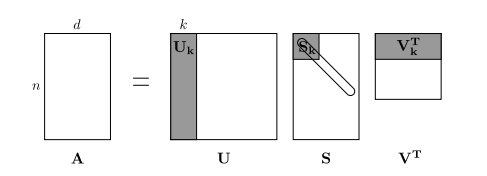Co-Occurrence¶
A co-occurrence matrix counts how often things co-occur in some environment. Given some word $w_i$ occurring in the document, we consider the context window surrounding $w_i$. Supposing our fixed window size is $n$, then this is the $n$ preceding and $n$ subsequent words in that document, i.e. words $w_{i-n} \dots w_{i-1}$ and $w_{i+1} \dots w_{i+n}$. We build a co-occurrence matrix $M$, which is a symmetric word-by-word matrix in which $M_{ij}$ is the number of times $w_j$ appears inside $w_i$'s window among all documents.
Example: Co-Occurrence with Fixed Window of n=1:
Document 1: "all that glitters is not gold"
Document 2: "all is well that ends well"
| * | <START> |
all | that | glitters | is | not | gold | well | ends | <END> |
|---|---|---|---|---|---|---|---|---|---|---|
<START> |
0 | 2 | 0 | 0 | 0 | 0 | 0 | 0 | 0 | 0 |
| all | 2 | 0 | 1 | 0 | 1 | 0 | 0 | 0 | 0 | 0 |
| that | 0 | 1 | 0 | 1 | 0 | 0 | 0 | 1 | 1 | 0 |
| glitters | 0 | 0 | 1 | 0 | 1 | 0 | 0 | 0 | 0 | 0 |
| is | 0 | 1 | 0 | 1 | 0 | 1 | 0 | 1 | 0 | 0 |
| not | 0 | 0 | 0 | 0 | 1 | 0 | 1 | 0 | 0 | 0 |
| gold | 0 | 0 | 0 | 0 | 0 | 1 | 0 | 0 | 0 | 1 |
| well | 0 | 0 | 1 | 0 | 1 | 0 | 0 | 0 | 1 | 1 |
| ends | 0 | 0 | 1 | 0 | 0 | 0 | 0 | 1 | 0 | 0 |
<END> |
0 | 0 | 0 | 0 | 0 | 0 | 1 | 1 | 0 | 0 |
Note: In NLP, we often add <START> and <END> tokens to represent the beginning and end of sentences, paragraphs or documents. In this case we imagine <START> and <END> tokens encapsulating each document, e.g., "<START> All that glitters is not gold <END>", and include these tokens in our co-occurrence counts.
The rows (or columns) of this matrix provide one type of word vectors (those based on word-word co-occurrence), but the vectors will be large in general (linear in the number of distinct words in a corpus). Thus, our next step is to run dimensionality reduction. In particular, we will run SVD (Singular Value Decomposition), which is a kind of generalized PCA (Principal Components Analysis) to select the top $k$ principal components. Here's a visualization of dimensionality reduction with SVD. In this picture our co-occurrence matrix is $A$ with $n$ rows corresponding to $n$ words. We obtain a full matrix decomposition, with the singular values ordered in the diagonal $S$ matrix, and our new, shorter length-$k$ word vectors in $U_k$.

This reduced-dimensionality co-occurrence representation preserves semantic relationships between words, e.g. doctor and hospital will be closer than doctor and dog.
Notes: If you can barely remember what an eigenvalue is, here's a slow, friendly introduction to SVD. If you want to learn more thoroughly about PCA or SVD, feel free to check out lectures 7, 8, and 9 of CS168. These course notes provide a great high-level treatment of these general purpose algorithms. Though, for the purpose of this class, you only need to know how to extract the k-dimensional embeddings by utilizing pre-programmed implementations of these algorithms from the numpy, scipy, or sklearn python packages. In practice, it is challenging to apply full SVD to large corpora because of the memory needed to perform PCA or SVD. However, if you only want the top $k$ vector components for relatively small $k$ — known as Truncated SVD — then there are reasonably scalable techniques to compute those iteratively.

